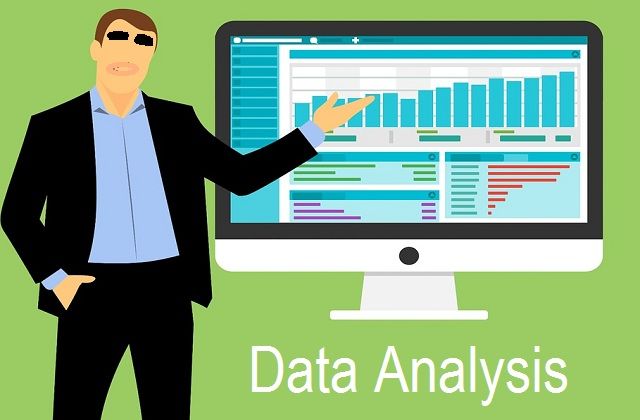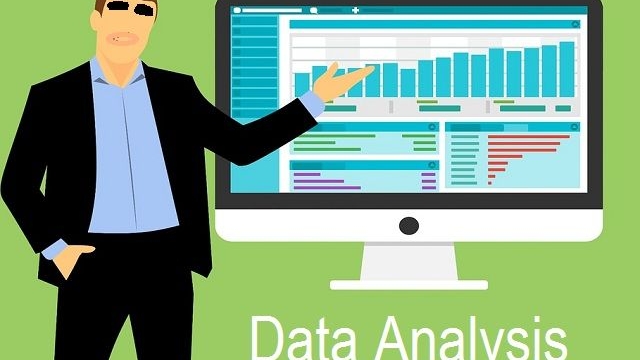
Research and data analysis are essential tools in uncovering hidden insights and gaining a deeper understanding of the world around us. By systematically investigating a topic through rigorous inquiry, researchers can shed light on various phenomena, provide evidence-based solutions, and make informed decisions.
In today’s data-driven society, the importance of research and data analysis cannot be overstated. As the sheer volume of information continues to grow exponentially, it becomes increasingly crucial to effectively analyze and interpret data to extract meaningful insights. Through the process of research, where a specific question or problem is investigated systematically, researchers can navigate through this vast sea of data, seeking patterns, trends, and connections that might otherwise be invisible.
Data analysis, on the other hand, serves as the engine that converts raw information into actionable knowledge. It involves the application of statistical techniques, computational algorithms, and visualization tools to uncover meaningful patterns and relationships within the data. By employing various methods such as hypothesis testing, regression analysis, or machine learning algorithms, researchers are able to extract valuable insights and draw evidence-based conclusions.
Both research and data analysis complement each other, with research shaping the questions and data collection process, while data analysis dictates how the collected information is processed and interpreted. This symbiotic relationship enables researchers to explore and investigate complex problems more deeply, revealing hidden insights and generating new knowledge.
Whether in the fields of academic research, business intelligence, or public policy, research and data analysis serve as powerful tools for understanding, problem-solving, and decision-making. By embracing these practices, individuals and organizations can harness the power of data to make informed choices, shape strategies, and drive innovation.
In this article, we will delve into the world of research and data analysis, exploring their significance, methodologies, and the benefits they offer. Join us as we embark on a journey to uncover hidden insights and tap into the transformative power of research and data analysis.
The Importance of Research in Decision-making
Research and data analysis are crucial components in the decision-making process. They provide valuable insights and information that help individuals and organizations make informed choices. Through research, we can gather facts, identify patterns, and understand various perspectives on a particular topic. With these insights, decision-makers can evaluate options, weigh potential risks, and make well-informed decisions that have a higher chance of success.
Research acts as a foundation for decision-making by providing a comprehensive understanding of the subject matter. It enables decision-makers to gather relevant data and analyze it critically. By conducting research, decision-makers can identify trends, patterns, and correlations that might otherwise go unnoticed. These insights can uncover hidden opportunities, mitigate risks, and ultimately lead to more effective decision-making.
Try It Out
Data analysis, on the other hand, helps decision-makers interpret and make sense of the gathered information. It involves organizing and analyzing data to extract meaningful insights, such as trends, relationships, and statistical patterns. Through data analysis, decision-makers can identify key factors influencing a particular decision and assess the potential impact of different courses of action.
In today’s fast-paced and complex world, making informed decisions is more important than ever. Research and data analysis provide a solid framework for decision-making, enabling individuals and organizations to navigate uncertainty and complexity. By valuing research and investing in data analysis, decision-makers can unlock hidden insights, minimize risks, and increase the chances of achieving desired outcomes.
Understanding Data Analysis Methods
Data analysis involves the examination, cleaning, transforming, and modeling of raw data to discover useful information, draw conclusions, and support decision-making processes. There are various methods used in data analysis that enable researchers to uncover hidden insights and gain a deeper understanding of the data at hand.
Descriptive Analysis: Descriptive analysis focuses on summarizing and describing the main characteristics of a dataset. This method involves organizing, visualizing, and summarizing data to identify patterns or trends. Descriptive analysis provides a snapshot of the data and helps researchers gain initial insights into its distribution, central tendencies, and variations.
Inferential Analysis: Inferential analysis allows researchers to draw conclusions and make predictions about a larger population based on a sample of data. This method utilizes statistical techniques to estimate parameters and test hypotheses. By analyzing a sample and extrapolating the findings to the entire population, researchers can make informed decisions or generalizations.
Exploratory Analysis: Exploratory analysis is a method used to discover relationships, patterns, or trends within a dataset. It involves examining the data from multiple angles, using techniques such as data visualization, clustering, or dimensionality reduction. Exploratory analysis helps researchers generate hypotheses and develop a deeper understanding of the data before applying other analysis methods.
Each of these data analysis methods contributes to a comprehensive understanding of the research topic. Combining these methods within a well-structured research plan enhances the validity and reliability of the findings, enabling researchers to uncover hidden insights and make informed decisions based on the data.
Remember, data analysis is not a one-size-fits-all approach. The selection of appropriate methods depends on the nature of the data, research objectives, and available resources. With the right analytical techniques, researchers can unlock the power of data and gain valuable insights that drive innovation and progress in various fields.
Leveraging Insights for Strategic Decision-making
Effective strategic decision-making is a crucial aspect of any successful organization. In today’s data-driven world, research and data analysis play a pivotal role in uncovering hidden insights that can inform and guide these decisions. By harnessing the power of research and data analysis, businesses can gain a competitive edge and make well-informed choices that drive growth and success.
Research allows businesses to gather relevant information and facts about their industry, market trends, customer preferences, and competitors’ activities. This data acts as a foundation for making strategic decisions, enabling businesses to understand their target audience, identify gaps in the market, and pinpoint areas of potential opportunity. Through comprehensive research, organizations can access insights that may have otherwise remained hidden, providing them with a deeper understanding of their industry and customers.
Once the research phase is complete, data analysis comes into play. Data analysis involves processing and interpreting the collected information to draw meaningful conclusions and identify patterns or trends. By applying statistical techniques and utilizing analytical tools, businesses can extract valuable insights from their data. These insights can shed light on consumer behavior, market dynamics, and operational efficiency, offering guidance for making strategic decisions.
Without leveraging insights from research and data analysis, organizations may find themselves making decisions based on limited or inaccurate information. This can lead to missed opportunities, lost revenue, and ineffective strategies. By embracing a data-driven mindset and utilizing research and data analysis, businesses can navigate the complexities of their industry with confidence, making informed decisions that align with their objectives.
In conclusion, research and data analysis are essential tools for uncovering hidden insights and facilitating strategic decision-making. By leveraging these powerful techniques, businesses can gain a competitive advantage, understand their customers better, identify growth opportunities, and ultimately achieve their desired outcomes. Harnessing the power of research and data analysis has become imperative in today’s fast-paced business landscape, allowing organizations to navigate challenges and seize the advantages that data-driven decision-making offers.

